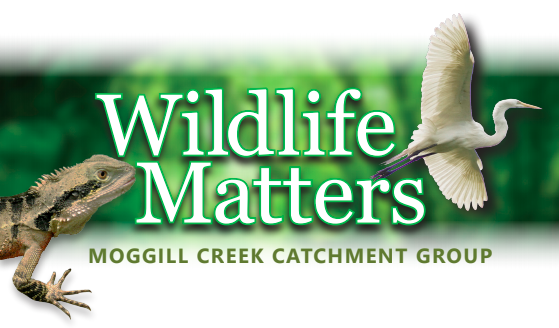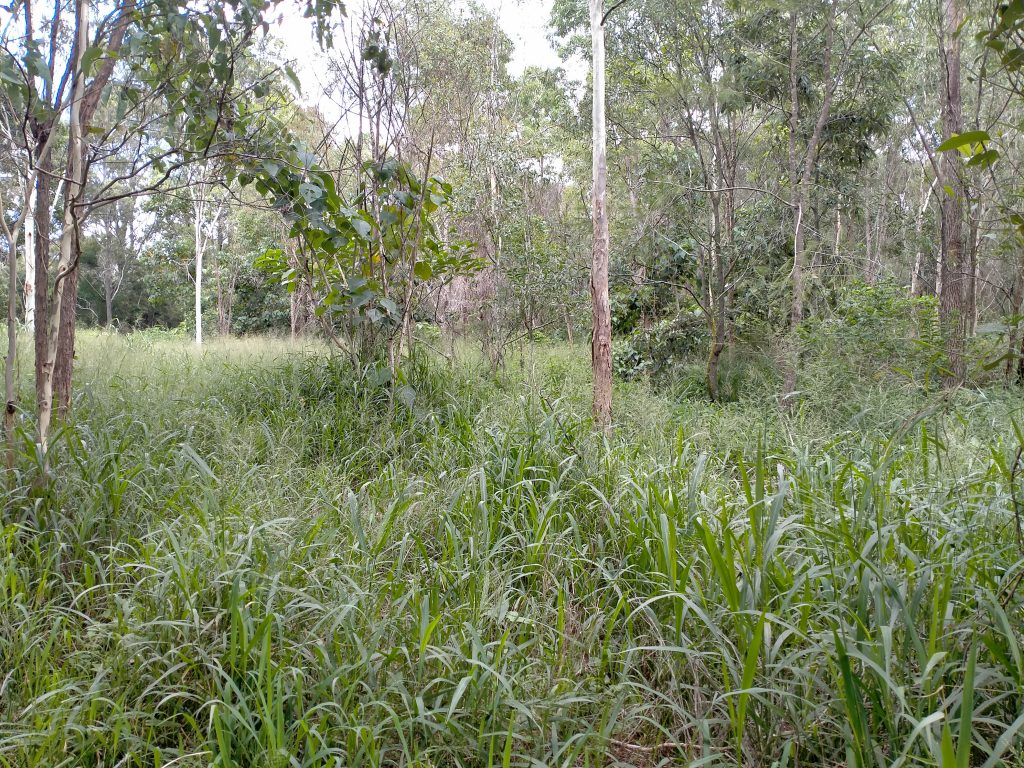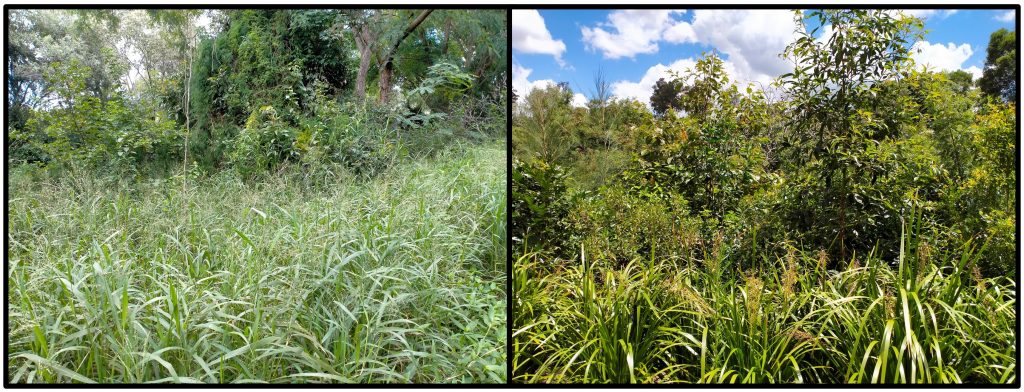 Grass invaders! Sighted in local creek!
Grass invaders! Sighted in local creek!
Invasive grass species are causing environmental havoc all over the globe. In fact, you don’t have to look too far to find one running amuck in your own backyard. Pictured here for instance is an area near Gold Creek, heavily invaded by the grass Guinea Grass, Megathyrsus maximus, a common invader of creek lines and shaded areas.
 Guinea Grass near Gold Creek
Guinea Grass near Gold Creek
But what makes a grass invasive and why are they so problematic?
When we say the term invasive it means the species is firstly, not native to Australia and secondly is having a negative impact, whether it be environmental, economic or otherwise. For example, Guinea Grass is considered invasive because it is native to Africa and has been associated with both negative environmental and economic impacts, including declines in native plant and animal species, more frequent and intense fires, and losses to crops.
Guinea Grass, like many of our invasive grasses was deliberately introduced for pasture to feed livestock in the early 1900s. When choosing plant species to introduce for pasture, agricultural scientists would conduct trials, looking for species that produced abundant yields of tasty feed (often tall, bulky grasses), were drought and disease resistant, could grow, reproduce, and spread quickly, and were resilient to grazing. These traits are indicative of both, a productive pasture, and a very successful and damaging invasive species. Many of these non-native pasture species were and continue to be selectively bred to enhance these traits, producing a ‘super pasture’, or looked at in another light, a ‘super invader’. Invasive grasses are consequentially very good at spreading and dominating native ecosystems, because that’s exactly what they were introduced to do!
So, how can we manage these pesky pasture grasses in natural areas? Well, it’s complicated and differs with the grass and the situation. Generally, however managing a grass invasion usually involves a combination of grazing or mowing, manual or mechanical removal, herbicide, and sometimes fire. Planting trees and shrubs and reducing light to the understory can also reduce grass cover and increase the number of native species. In fact, thanks to hard working local Bushcare groups, there has been some great success in reducing Guinea Grass along our creek lines. Here is a picture of a non-planted (left) and planted (right) area along Cedar Creek, upper Kedron.
 Planting with natives to control Guinea Grass – before and after
Planting with natives to control Guinea Grass – before and after
Words and photos by Gabrielle Lebbink
Published in


